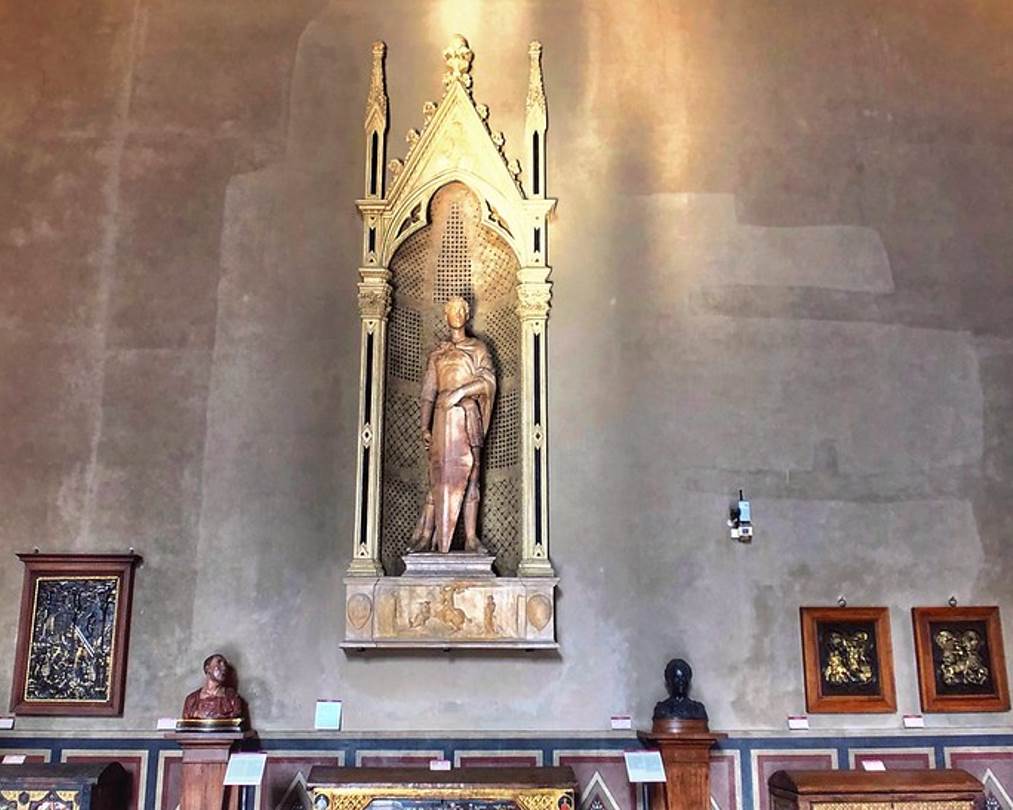One of the most intriguing sculptures by Donatello (1386-1466) was one of the 14 works of art commissioned to decorate the exterior of a church in the heart of the Italian city of Florence.
Let’s take a closer look at some of the most interesting facts about the statue of Saint George, a masterpiece by Donatello that was sculpted during the early years of this remarkable Renaissance master.
1. It was commissioned to decorate a former grain market
The sculpture of Saint George by Donatello was commissioned in the early 15th century to decorate the Orsanmichele church. This church is located just north of the Piazza della Signoria, the historical heart of Florence, the capital of the Tuscany region in Italy.
Florence is also the city credited with being the birthplace of the Renaissance, and Donatello was one of the pioneers of this cultural revival that eventually swept across Europe.
Orsanmichele doesn’t look like a church and that’s because it was originally built as a grain market in the year 1337. It was converted to a church between 1380 and 1404 and multiple niches were integrated into its exterior.
Donatello was an extremely talented sculptor who, along with various other renowned sculptors, earned a commission to decorate these niches with sculptors of various saints. He completed this remarkable work of art between 1415 and 1417.
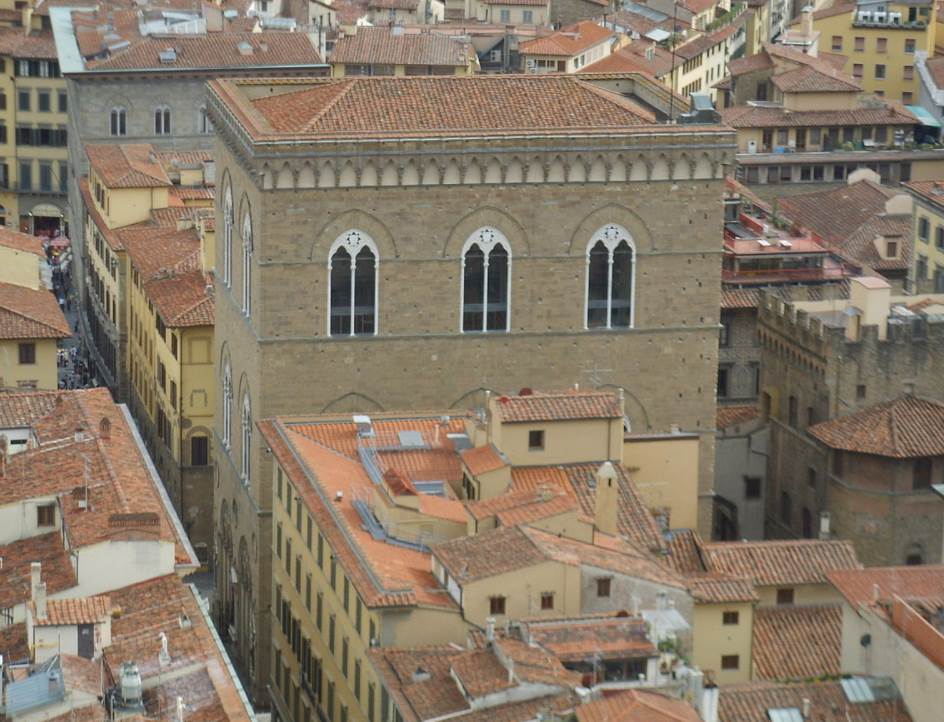
2. It depicts a Roman officer who died as a martyr in the early 4th century
The statue of Saint George depicts a man who is believed to have been a Roman officer of Cappadocian Greek descent who lived during the reign of Emperor Diocletian.
This infamous emperor launched one of the bloodiest persecutions of Christians in the early 4th century. Saint George, a man also known as “George of Lydda,” was sentenced to death and executed on April 23, 303, because he refused to give up his Christian faith.
Because of this martyrdom, he was venerated in the 5th century and became an important military saint during the Crusades in the Middle Ages.
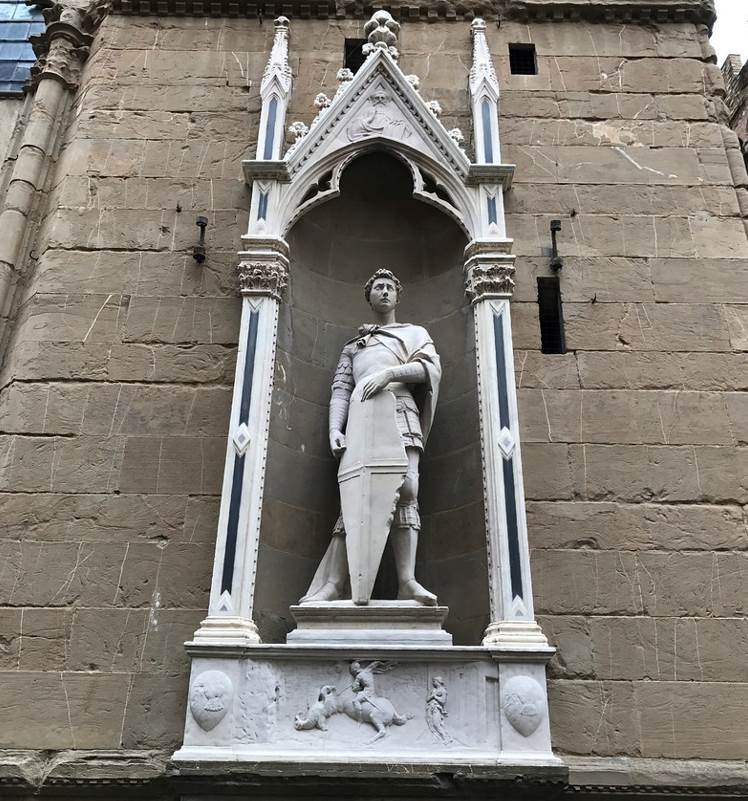
3. The weight of the young man rests on both legs
One of the most interesting features of Renaissance sculptures was a particular position derived from classical statues known as “Contrapposto.” This translates to “Counterpoise” and means that most of the weight of the depicted figure rests on one leg.
One of the most famous examples of this particular pose is the statue of David, an amazing sculpture by Michelangelo and arguably one of the best-known sculptures in the world.
The early 15th century was also a period known as the “Early Renaissance” so this particular classical position wasn’t yet incorporated into most sculptures at the time. The weight of Saint George by Donatello is carried by both legs.
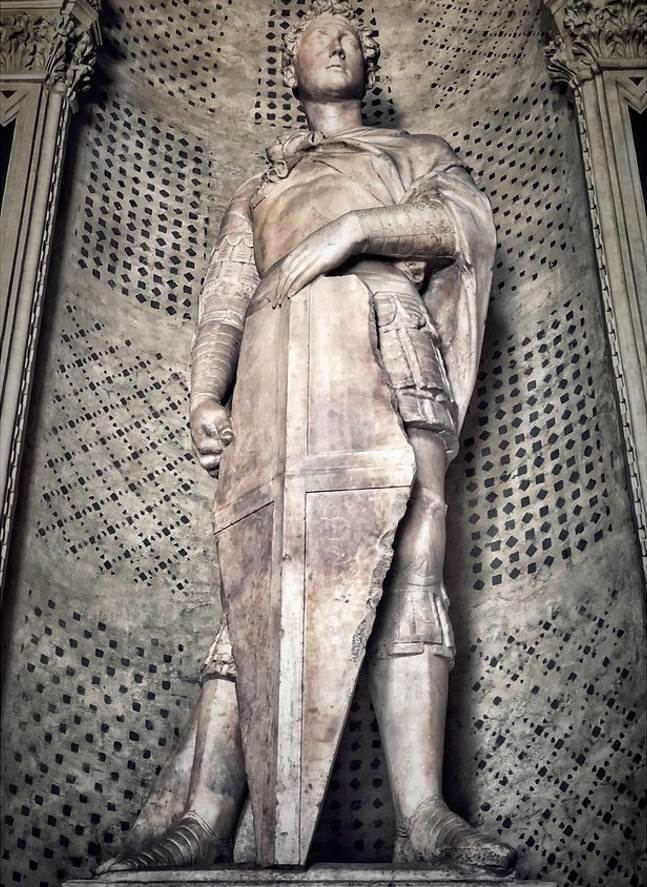
4. It depicts an important moment derived from an 11th-century legend
Saint George is one of the most famous saints in Christianity, and that isn’t just because he became a martyr during the early 4th century. His fame is mostly the result of a legend that emerged during the 11th and 12th centuries.
This legend is set in Cappadocia, modern-day Turkey, and tells the story of a village that is exerted by an evil dragon. Because they ran out of livestock they provided a human sacrifice to the dragon once a year.
When a popular princess was supposed to be the next victim, Saint George slays the dragon and rescues the princess, making him the ultimate hero.
Donatello sculpted Saint George in such a way that it appears as if he is suffering from anxiety. His eyebrows come together and there are wrinkles on his forehead, a clear sign that the artist intended to depict the moment just before the hero slays the dragon.
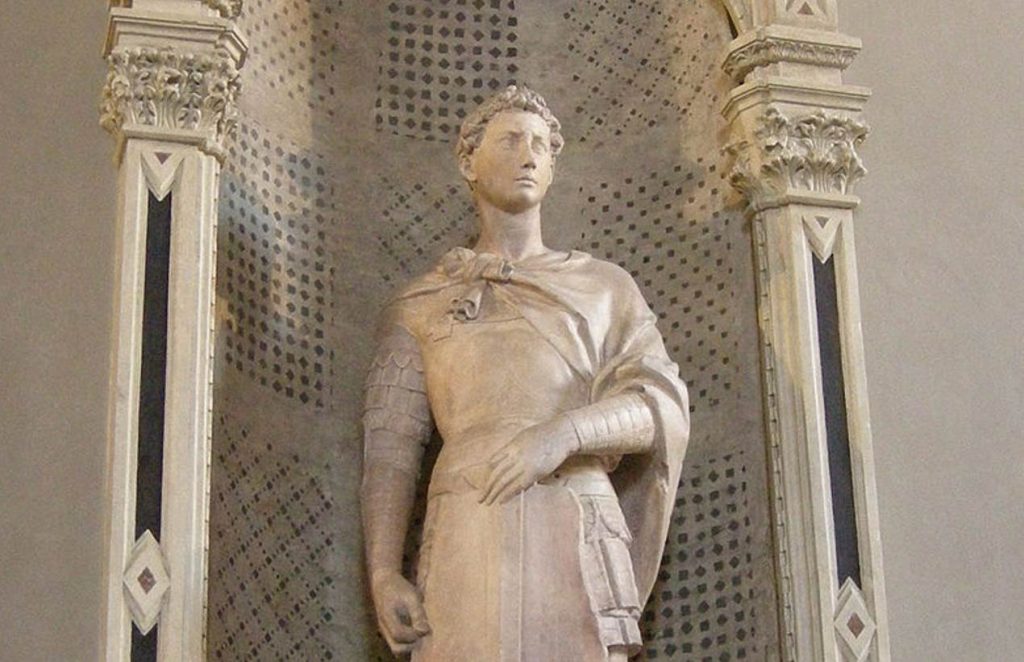
5. A bas-relief below the statue depicts what happens next
What’s remarkable about the stage of Saint George and the way that Donatello depicted him is that he is not carrying a sword. There is, however, enough space to place a sword into his right hand so there was surely one other upon completion.
There are also small holes on his head which could indicate that he also wore some sort of helmet, ready to attack the dragon.
The look on his face and the traces of Saint George being ready for combat aren’t the only reasons that we can rest assured that it depicts the moment just before the hero attacks the dragon.
Just below the statue, there was a marble stiacciato bas-relief that depicts the moment that Saint George slays the dragon and frees the princess. This relief (1416-1417) was originally placed just below the sculpture in the external niche of the Orsanmichele church.
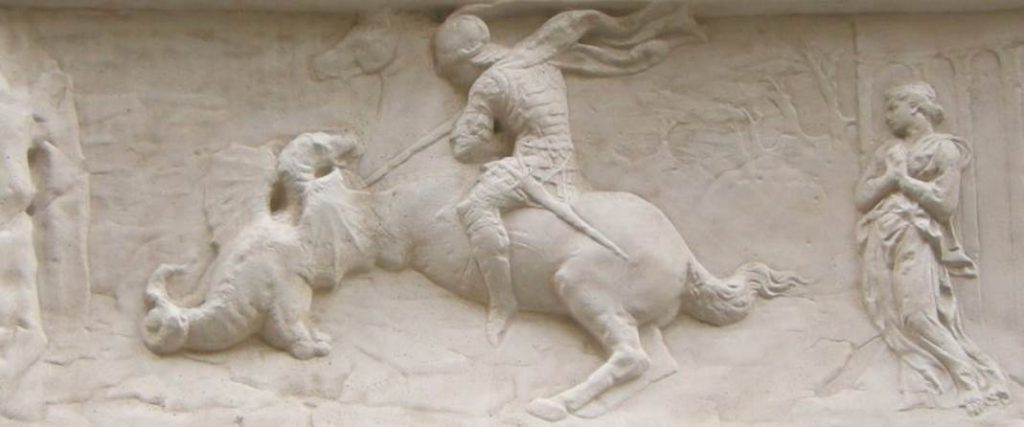
6. It wasn’t the only sculpture that the artist created for the church
The Guilds of the city of Florence started ordering sculptures to decorate their newly renovated church in the late 14th century, and between 1399 and 1430, 14 sculptures were unveiled inside the niches.
Some of the most renowned artists in Florence worked on these works, including Lorenzo Ghiberti, Nanni di Banco, and even Renaissance architect Filippo Brunelleschi.
Before Donatello completed Saint George, he had already completed the statue of Saint Mark between 1411 and 1413, a sculpture assumed to be one of the first sculptures of the Renaissance.

7. How big is Saint George by Donatello?
Just like most other sculptures that were commissioned to decorate the niches of Orsanmichele, the statue is quite big. After all, they had to be impressive from street level.
The statue of Saint George reaches a height of 209 centimeters (82.28 inches), excluding the niche and the pedestal with bas-relief it was positioned on.
8. Where is the statue located?
The statue remained inside its niche for well over 4 centuries. It was only moved to the Bargello Museum in Florence, its current location, in the year 1892. Between 1892 and 2008, a bronze replica of the sculpture replaced the original one.
A marble replica was placed inside the niche of the Orsanmichele church on April 23, 2008. This was the same day that Saint George, the Roman officer who became a Christian, was martyred over 1,700 years earlier.
Both the sculpture and the bas-relief depicting Saint George slaying the dragon and saving the princess can be found at the Bargello Museum today.
